Natural shade
Loft and ethnic interiors often imply the presence of brick walls of a natural shade. Authentic, historical masonry gives the room a special charisma, allows you to play with textures and place accents.
You should not leave the wall in its original form. An untreated porous surface is more difficult to clean. Under the influence of negative factors, especially in the kitchen area, the masonry will begin to deteriorate faster. To preserve the terracotta shade, the pre-cleaned and dried surface must be covered with glossy or matte varnish. Many people use clinker oils. They will not only protect the brick from dirt, but also give the wall a richer and more saturated color.
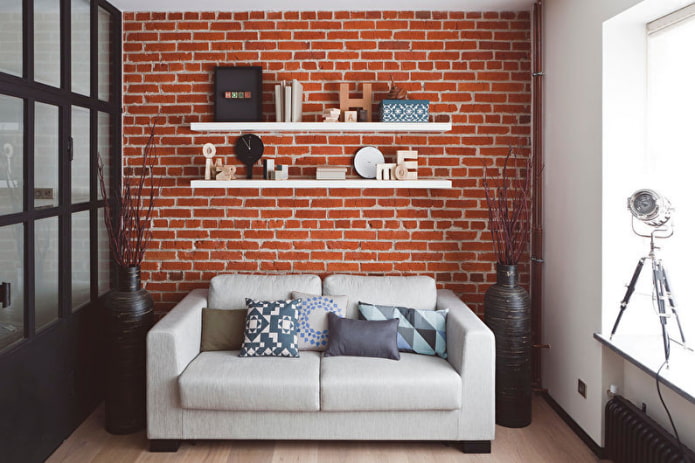
Whitewashing brick
White brick is the primary attribute of the Scandinavian style, although in recent years it has smoothly migrated to other directions. The finish looks moderately restrained, textured and very atmospheric.
Whitewashing can be quite dense or slightly transparent. In the first case, the wall is covered with interior paint in 2-3 layers, using a roller or a wide brush. In the second, they use a solution consisting of a quarter of water.
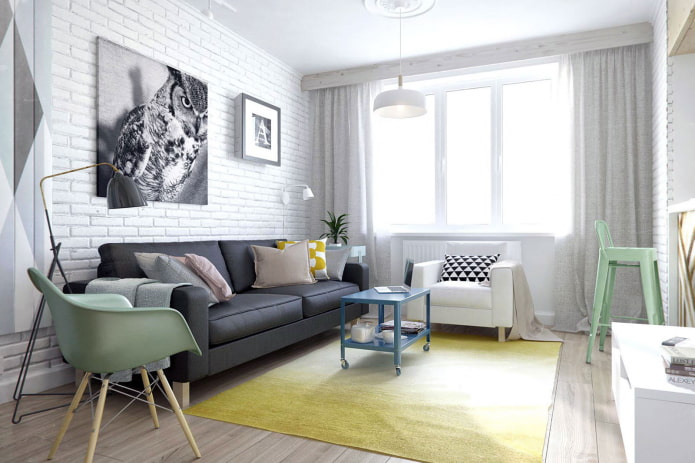
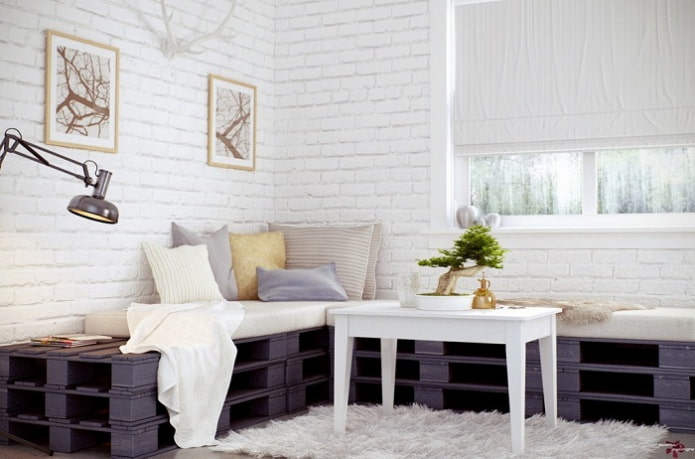
Painting with an antique effect
You can create the feeling of old, partially faded brickwork in several ways:
- Diluted paint is applied with a sponge, changing the pressure in places.
- The space between the rows is tightly fill with color, and the surface of the bricks is only slightly tinted with the same shade, creating the effect of a faded wall.
- The paint is applied with light movements using a lightly packed brush, compacting in some places and barely touching in others.
The effect of slight wear makes the masonry more expressive, looks stylish in combination with natural wood, stone, metal.
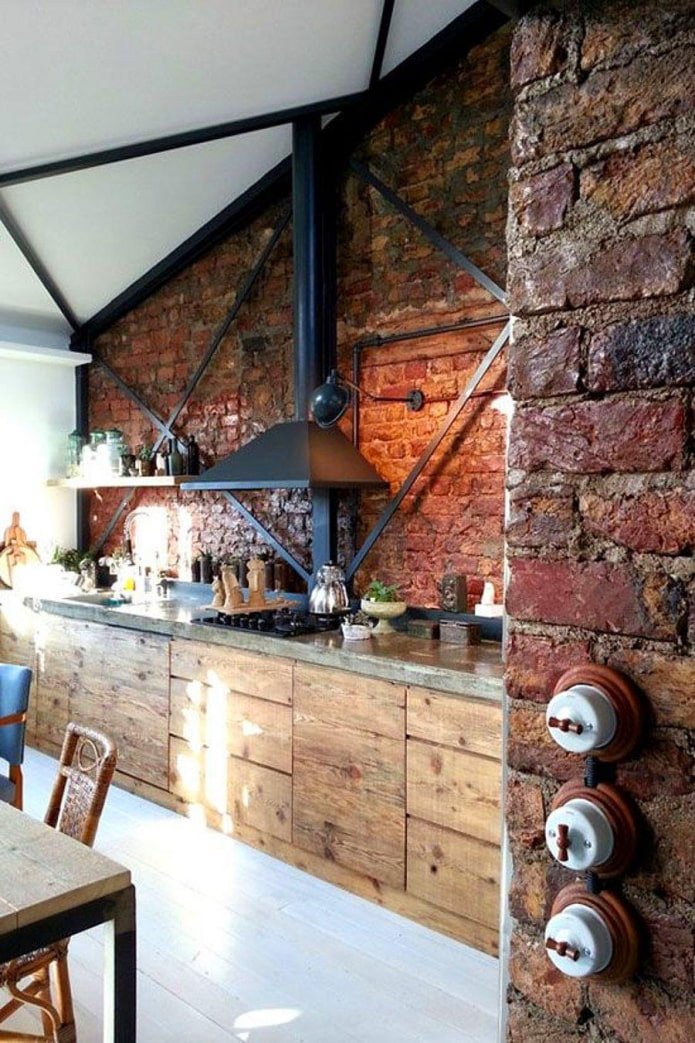
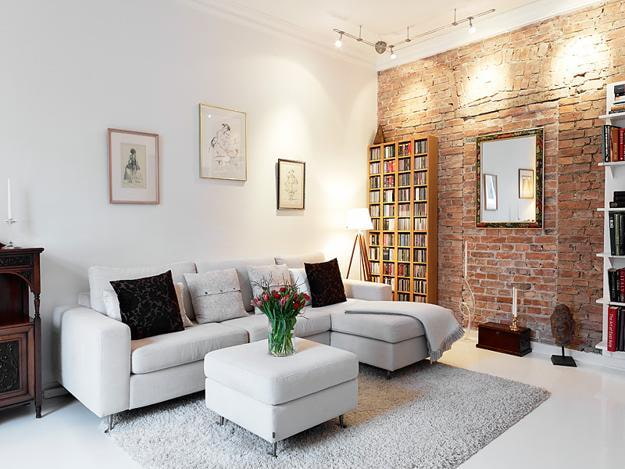
Full color fill
There are many ways to process brick: aging, lightening, complete color change, etc. At the same time, most craftsmen do not recommend picking up a brush until the material is completely dry. Ideally, you can start painting a year after the completion of construction.
To ensure that the brick continues to “breathe” after repainting, it is important to use paint for interior work. It is better to avoid facade solutions due to the possibility of toxic fumes.
To ensure that the color lies evenly, painting begins from the top. Most finishers recommend painting the seams with a thin brush, and then proceeding to cover the main surface. The paint is applied in broad strokes with a slight overlap. Particular attention is paid to corners and seams. Masking tape is used to protect surrounding surfaces.
For a dense fill, one layer will not be enough. Wait until the paint dries completely and then go over the surface with a brush or roller again.
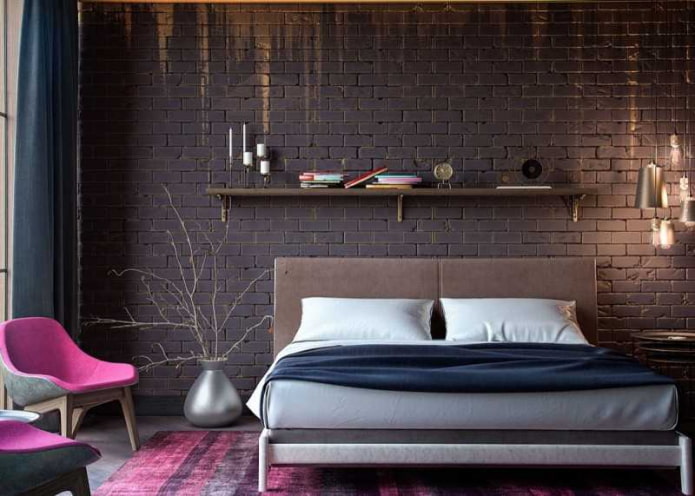
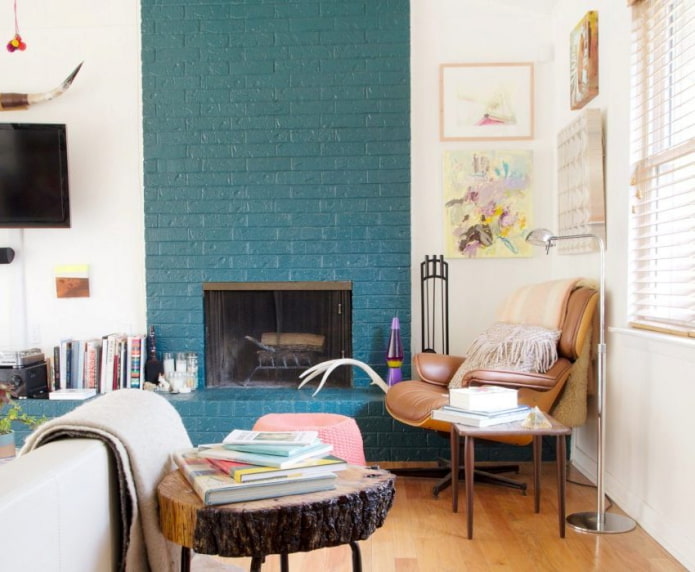
Darkening the brick
Vintage interiors with antique furniture, home libraries and studies are often decorated in dark colors. The color of the brick is no exception. We’ll take on board several methods to give the surface a “smoked” look.
- Stain. The variety of dye colors allows you to experiment with shades, achieving perfect harmony with the style of the room.
- Blowtorch. Small areas of the masonry are quickly treated with a soldering iron flame, adding dark spots.

Stencil, graffiti, painting
If you want to show your imagination when decorating your walls, you can choose one of the painting options below:
- Stencil. This painting technology involves highlighting a part of the wall with color. This could be a geographical map in the living room, a geometric pattern or a motivating slogan. The blank is cut out of Whatman paper or thin plastic. It is better to choose paint that contrasts as much as possible with the shade of the brick.
- Graffiti. It will look especially interesting in a loft interior or a children’s room for boys.
- Hand painting. Images are applied using acrylic paints. The theme and application technique in this case are limited only by the artist’s imagination and skills.
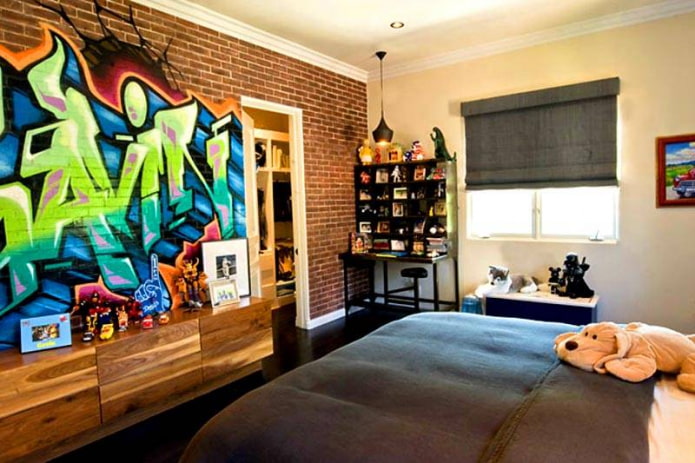
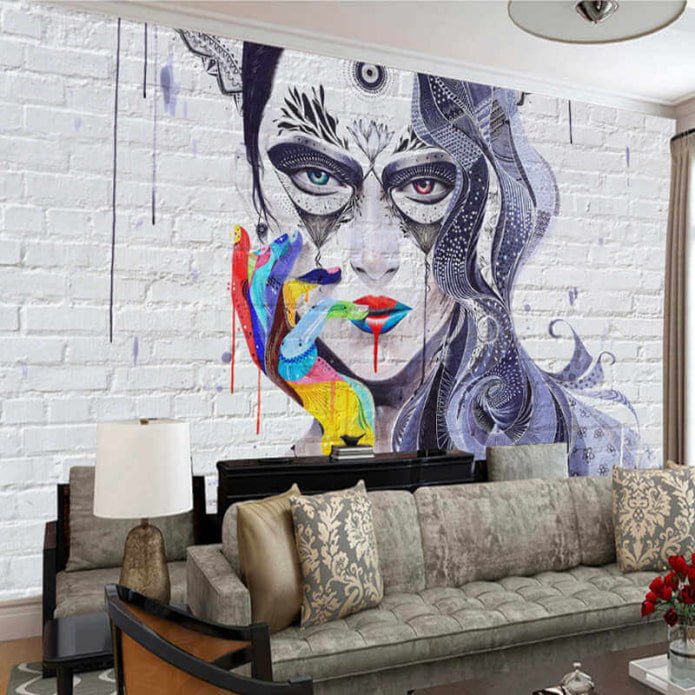
Gradient and Multicolor
Using a foam sponge and several rich shades of paint, an ordinary brick wall can be turned into a real work of art. There are several methods of multi-colored painting:
- The “one brick” technique involves painting each brick in its own color in stages. The work requires a lot of patience and endurance, but the result can exceed all expectations. If you need to add playfulness and spontaneity to the room, feel free to take this method into service.
- Gradient filling. The paint is applied with a sponge or spray can to a pre-prepared surface. For the best effect, the entire space is filled with color. Multi-colored areas can smoothly transition from one to another, mix, or have clear boundaries. For calmer interiors, several differently saturated shades of the same color are used, for dynamics – contrasting compositions.
- With the help of color, a brick wall can be connected with other planes of the room. Colored streaks descending from the ceiling onto the black masonry look very original. In a similar way, the color can flow from the floor to the wall or from one wall to another.
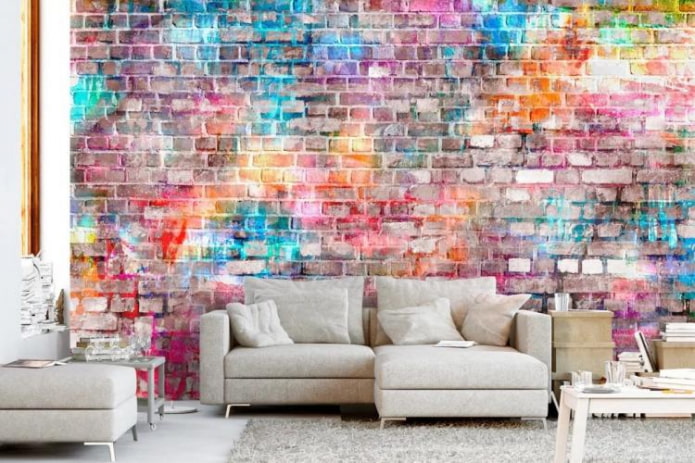
A painted brick wall will become an original decoration of a residential interior. When choosing a color, it is important to remember that it will no longer be possible to return the original appearance of the material, and every 2-3 years the surface will have to be repainted. However, if reality coincides with expectations, the updated wall will delight you day after day.
Now reading:
- Stylish and Practical Ways to Cover the Joint Between a Countertop and a Backsplash
- Corner Bathtub in the Interior: More Than 50 Photos and Creative Design Ideas
- Compact hallway design: 50 photos, ideas and advice from professionals.
- Rules and table of color combinations in the interior: 43 photos for inspiration
- Cleaning the house: fighting dirt, grease, glue and ants